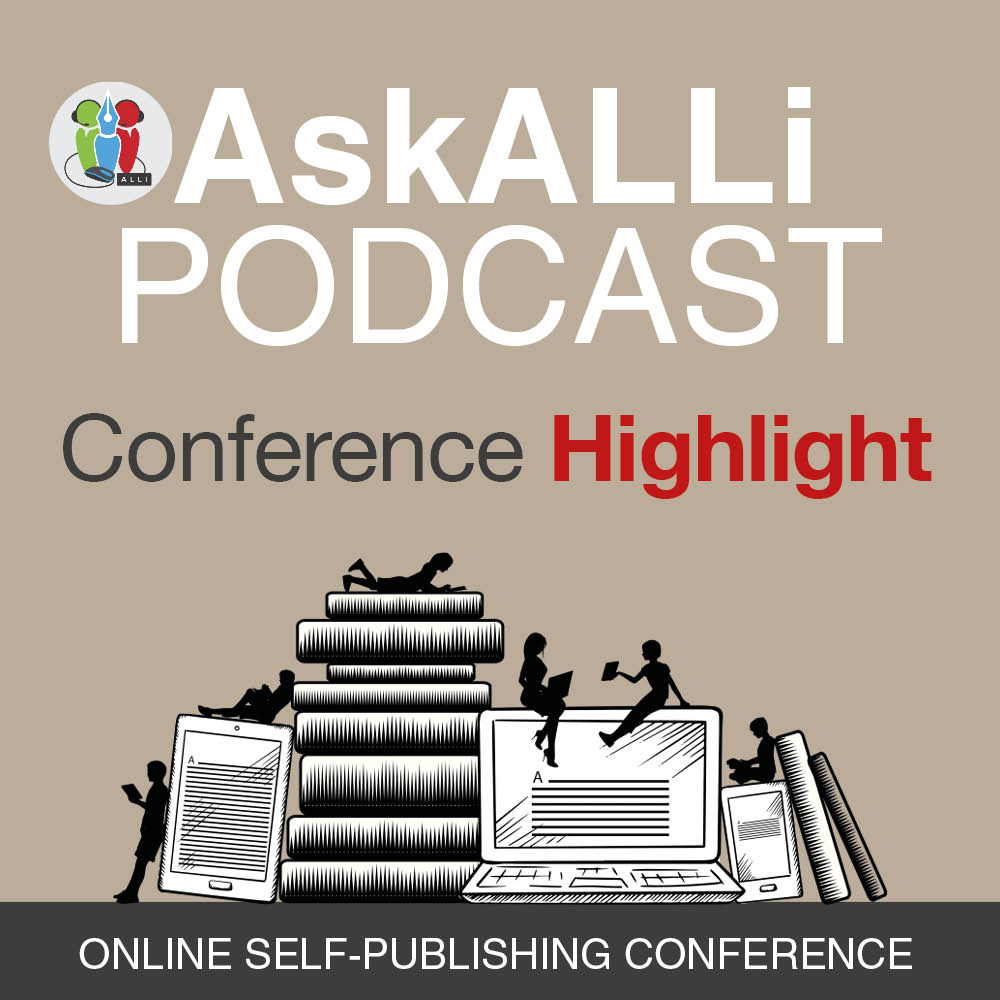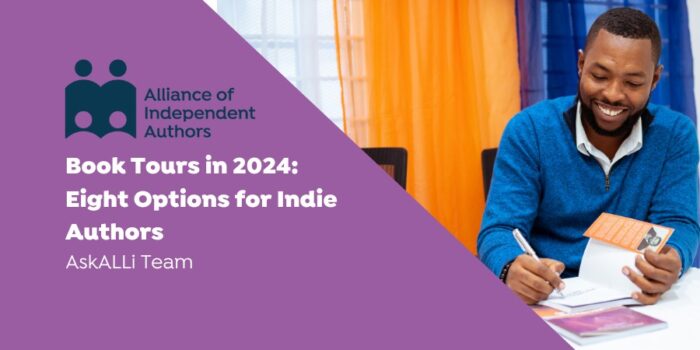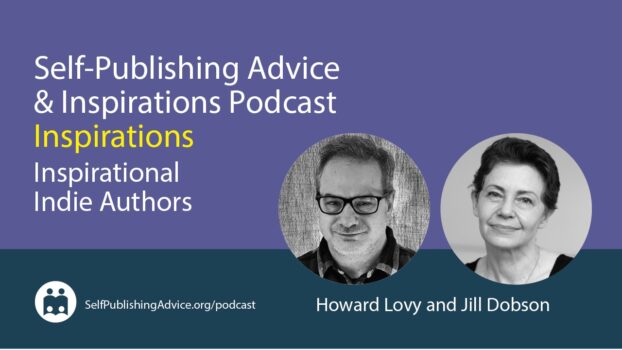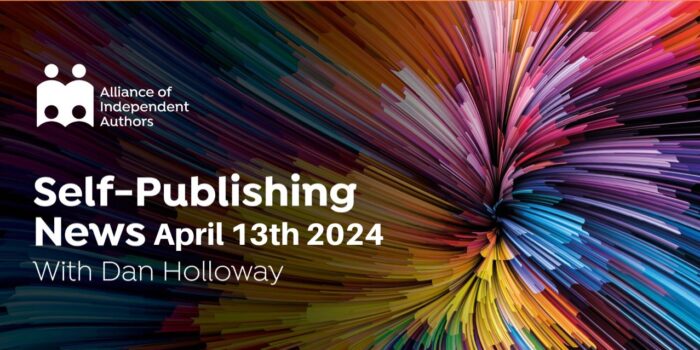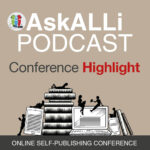 In this presentation, author Sacha Black focuses on the creation of villains. Why? Because villains are vital to your novels. They create conflict, drive tension and up the pace. Without a solid villain, your novel will fall flat. In this presentation you’ll learn what clichés and stigmas to avoid, as well as the major factors of villain creation.
In this presentation, author Sacha Black focuses on the creation of villains. Why? Because villains are vital to your novels. They create conflict, drive tension and up the pace. Without a solid villain, your novel will fall flat. In this presentation you’ll learn what clichés and stigmas to avoid, as well as the major factors of villain creation.
Sacha says: “Behind every successful hero is a villain. Think about it. Would Metropolis have needed Superman if it weren’t for Lex Luthor and his plans for world domination? I don’t think so. Likewise, think about Gotham and Batman. Would Gotham have needed Batman if it weren’t for the Penguin or the Joker?

Sacha Black
“There’s a big debate over what’s the most important aspect is when creating your novel, is it characters? Is it plot? It could be either and I know supporters of both those camps. However, I think there’s something even more fundamental than either of those things, and that’s conflict.
“Conflict gives your characters an aim and a purpose.”
Listen to Sacha's presentation on how to create a great villain that gives your hero the purpose she needs.
This podcast is part of Self-Publishing Advice Conference, an online author conference that showcases the best self-publishing advice and education for authors across the world — harnessing the global reach of the Alliance of Independent Authors’ network. Our self-publishing conference, which runs alongside the London Book Fair and Digital Book World, features well-known indie authors and advisors, for 24 sessions over 24-hours, in a one-day extravaganza of self-publishing expertise straight to your email inbox.
Listen to Sacha Black's Presentation
Subscribe to our Ask ALLi podcast on iTunes, Stitcher, Player.FM, Overcast, Pocket Casts, or via our RSS feed:
Watch Sacha Black's Presentation
Read the Transcript
Hello everybody. My name is Sacha Black and I am here presenting on character development, how to create the villain your hero deserves.
Let’s go straight into it. Your hero is not the most important character in your novel. Your villain is. That’s my favorite phrase. It’s how I opened my novel, 13 Steps to Evil and it’s how I start every conversation I have about characters. I’m sure that that statement might make some of you feel uncomfortable because our stories are all about our heroes. Our heroes are our Mona Lisa’s. There our masterpieces and they’re the thing we fall in love with most often in our novels. We often spend hours crafting our heroes, going into depth about their background and their history, and we neglect our villains. Well, I want to change that. There’s a famous phrase that goes something like behind every successful man is a woman. Well, I’m going to change that. Behind every successful hero is a villain. Think about it. Would Metropolis have needed Superman if it weren’t for Lex Luthor and his plans for world domination? I don’t think so. Likewise, think about Gotham and Batman. Would Gotham have needed Batman if it weren’t for the Penguin or the Joker? There’s a big debate over what’s the most important aspect is when creating your novel, is it characters? Is it plot? It could be either and I know supporters of both those camps. However, I think there’s something even more fundamental than either of those things, and that’s conflict.
Conflict gives your characters an aim and a purpose. It gives them something to change, which ultimate, gives them a reason to change, which ultimately creates your plot because story is about change. It doesn’t matter whether your hero’s character arc is positive, negative or flat. Your character is changing and okay, perhaps in the example of a flat arc, it’s not your character that changes, but the world around your character and the change that your hero puts onto that world, but there’s still change. And what creates change? Conflict. No conflict. No plot.
If there’s no conflict, there’s nothing to make your characters change or grow through their character are, which means there aren’t really characters either. And what’s the source of your conflict? Your villain. And that’s why villains are so important. Let’s look at the foundations of creating a villain traits. Too often we get caught up in trying to work out what the best traits for our characters are, but here’s the thing. There is no magic bullet. There is no panacea and there is no right or wrong answer. I know that’s not what you want to hear. Perhaps some of you were hoping for a definitive answer. Well, I can’t give that to you. What I can do is recommend The Positive and Negative Trait Thesaurus by Andra Ackerman and Becca Puglisi. Those two books will give you long lists of different types of traits and how your character’s might embody those in your story. However, let’s come back to the presentation. What I can tell you is that if you make both your hero and your villain of representation of your book’s theme, your readers will engage with that and they’ll engage with your plot and your characters and much more. But what do I mean by making your hero and villain a representation of your book’s theme? Well, your hero and your villain are polar opposites of each other.
So where your hero represents the theme. Your villain ought to represent the anti-theme. Let me give you an example. Katniss Everdeen from the Hunger Games represents self sacrifice. She sacrifices herself time and time again for the good of others. However, President Snow, the villain in the story, sacrifices others for the benefit of himself. Let me reiterate this once more. Your hero represents your book’s theme and your villain should embody the books anti theme. But embodying the anti theme doesn’t mean your villain should be pure evil.
If you create something pure evil, it’s actually very one dimensional. If you look at some of the greatest villains in history and literature, they had more depth than just world ending mindsets. Villains like Hitler, Voldemort and Hannibal have more layers and more depth. For example, Voldemort who loved his snake, Nickini. And yes, some might argue that that’s only because she could benefit him and he could use her to his own benefit. But what about Hannibal? He helps Clarice Starling find another serial killer. These nuances add depth to your character and additional layers. People are confusing. We are a cauldron, a `cocktail of conflicting emotions and behaviors, but just confusing as we can be. We have a basic psychology that permeates all of us irrespective of our race, gender, sexuality, or any other difference. More often than not, every human will react in a very predictable way to everything. Why? Well, we have consistent personalities. We develop habits and routines and I don’t just mean reading the paper in the morning, I mean how we react to others or perhaps how we feel seeing violence or or animal torture. We’re reliable until suddenly we’re not. I’m sure everyone can think of an example where they’ve known somebody, perhaps a quiet person at work who’s completely normal and unimposing and then one day they snap and they trash the office or they have a breakdown.
To capture that complexity in both your hero and your villain, you first need to establish their normal behavior and that’s where traits come in. Once you’ve established their traits, you can have them react abnormally to the obstacles in your plot and it will seem genuine and authentic.
Now the thing with traits is that you’re writing fiction, not realism. Humans have dozens of traits, but readers aren’t expecting real villains to climb out of the page. They know books aren’t real. What you need to give your reader is enough depth for your characters to be a reflection of reality.
Here’s the crunch. You only have 70 or perhaps 80 or maybe a hundred thousand words to portray your characters and specifically your villain as multifaceted. Realistically, you don’t have time to make him or any of your other characters, real humans, so don’t try. Your villain will actually seem much more realistic if you pick just a small handful of traits and use them consistently rather than trying to make your villain as complex as you or I might be. A couple of traits shown consistently, will pack a much bigger punch than a scatter bomb of traits where you’re trying to represent a real human.
Okay. The last and perhaps most important point here is that your villain needs to have a positive trait. Why? Well, we’ve kind of covered that. Nobody is pure evil. Sure. Somebody is going to talk about Disney characters who occasionally are pure evil or even perhaps serial killers, but there’s that cliched phrase that even a villain has a mummy, but it’s really true. So think about how you can either give them a positive trait or add enough layers of depth that they come across as non one dimensional.
Credibility. In a pure form, credibility means believability. You need a credible villain because when you do have one, you also have a believable villain, which means your readers will fall hook, line and sinker for your villain and for their dastardly plan. And that’s important to give your plot credibility and tension.
You need your readers to believe that your hero might not defeat the villain, but how? Well, credibility is built and one of the key building blocks for credibility are personal values. What is a value? It’s something that you deem important or worthy, but in a non-tangible way. I don’t mean a house or a car. Values are the most important non-materialistic thing that you or I or a character has. They are quite literally part of who we are as humans and they help to define our beliefs.
Examples of values could include loyalty, wisdom, trust or honesty. But why do they matter? Well, they matter because they can be used to create tension and conflict and we already know that conflict is vital for your story and for creating change within your characters. You can use two conflicting traits and make, sorry, values and make the hero choose between them.
Any Game of Thrones fans out there will appreciate this next example. But my favorite example of a character having conflicting values and having to make a choice isn’t Ned Stark. Ned is both fiercely loyal and also wise. He’s a dear friend of the king, but the king asks him to become his trusted advisor. Now Ned’s loyalty makes him want to go to the king’s side and help.
But another one of Ned’s values, his wisdom and his wisdom tells him that there’s a chance he could lose his life if he goes to help the king. What should he do? Follow his loyalty or his wisdom? It’s a deeply, deeply inner question of that and it creates a lot of inner conflict and turmoil for him as a character and readers engaged with that. You can do the same for a villain’s values. Typically, a villain’s values are enacted in one of two ways.
They could have a positive value that the villain then acts in a bad way, or they could have a negative value instead of a positive one. Let’s go deeper on the first example. Apositive value enacted in a bad way. Villains are notorious for placing a high value on loyalty, but it’s the actions a villain takes when someone breaks their valley i.e., when someone’s disloyal that their true nature comes to the front. Where our hero might be disappointed in their friend or the person that’s broken their value, a villain is liable to cut your tongue out or hurt you.
The second reason it’s so important to give your villain a value or values is that if a bad guy sticks to his values, even if that means doing something awful, then your villain has integrity and integrity breeds credibility, authenticity, and believability, as well as giving your villain a motive for the things that they’re doing and a motive is the reason why your character does something and combine that with values and it creates believability.
Now I’m going to make a blanket statement and say that villains don’t become villains without a long history of events that shape and mold them into that villainous form. Now, somebody might argue with me that there are lots of pure evil villains in fiction and perhaps even reality, And sure, there might be some, but if you search hard enough, I’m sure you know, I’m sure that you could find a novel with a hairy peanut for a villain to, but just because they’re pure evil doesn’t mean a hairy peanut is going to make a good villain, so let’s avoid that.
I think the things that shape us most in life create kind of marks on our souls. Scars, if you like. Sometimes they’re good scars and sometimes they’re bad scars, but they always leave a mark that impacts and often changes us in some way, whether that’s our perception or our behavior. What am I talking about? Well, perhaps it’s a divorce or the death of a friend or perhaps a spouse or maybe a soldier who lost a limb in war, or you could have been the victim of a crime. There are many, many examples of these things that I like to call soul scars.
If your character, for example, was in a boating accident where they were the only survivor, you might forgive them for freaking out if a new date took them on a surprise boat trip for their first date. These events scar us and change us, and more often than not, we derive deeply personal motivations from them. These events have a significant impact on us and change the way a character behaves in the future.
Just like how heroes and villains react to broken values differently. A villain will react differently and typically badly to these soul scars where it might be the making of a hero. For example, a hero might be the sole survivor of this boating accident and decided to create a charity for families who have lost people at sea. Whereas your villain might want to destroy the boating company responsible for the death of his loved ones, but how does a villain get from a singular incident to the dark path they’ve gone down? Unless your villain is emotionally weak, then generally it is the repeated long term or sustained experience of soul scars that leads them to wander down the path of evil. It isn’t one off experiences. By that I mean a villain with a failure complex might be exposed to abuse at home or perhaps being told they’re a failure. Then they might not be picked for a school team. They might fail exams. They might not be able to get a job. These failures will build up until the villains snaps and turns to the dark side. Usually this will mean the villain makes a series of increasingly bad decisions, which ultimately lead to his downfall. For example, Scar, the character from the Lion King is the younger brother of the Lion King, Mufasa. Scar is mortally jealous of his brother. Scar believes that he deserves the crown and he wants the crown and he’s willing to do anything to get it. But that leads scar to make a series of bad decisions trying to get to the crown, the most significant of which gets him killed.
Bad decision one: Scar tricks Prince Simba, the protagonist, Mufasa’s son and Scar’s nephew to risk his life. Bad decision two: instead of saving his brother Scar kills Mufasa. Bad decision three: Scar tricks Simba into leaving the Pride Lands after his father’s death. But the two decisions that lead to his death are allowing a pack of Hyenas, which ultimately kill him into the pride lands and underestimating Simba and his friends, the latter of which is what actually gets him killed. Now, the most important thing is to make sure the soul scar is relevant to the story. So if you’re going to give your villain a failure complex, make sure it’s relevant or look at your stories theme and see how you can derive a soul scar that’s relevant to that.
One of the most frequent questions I get asked is how to avoid a villain cliche. So let’s start by clarifying the difference between a cliche and a trope. Cliches are words, phrases, expressions or scenes that have been overused to the point they become predictable and unoriginal. Some examples include objection use in a court scene where the prosecutor is losing or perhaps a villain or witch with a mwahaha like cackle or another example would be the lover running into a church and stopping the wedding just as the priest says, “Does anyone have a reason why these two can’t be lawfully married?” My worst, worst cliche, “and then I woke up and realized it was all a dream.” I hate that one personally, but tropes are different.
They are recurring themes, concepts and patterns found within a genre. In fact, they are genre specific, which is why tropes help you identify what genre you’re reading. The difference between a trope and a cliche is that a trait can be used over and over again. An example, well, three examples from fantasy might be the chosen one, a magical sword, potion or device that saves the world but is conveniently difficult to locate or perhaps a prophecy. The point here is that cliches are bad and tropes are good.
But there are so many villainous cliches, which means they are very easy to fall into and to create, there’s hundreds from pet cats, pet cats, not cats, to drinking red wine, wearing black clothing, as I’ve said, warts on witches noses, but also mental health disorders, which we’ll come onto in a moment.
There are loads of cliches and while using them is generally frowned upon everything in moderation is fine, but there’s one particular occasion when a cliche is actually essential and that’s historical context. When you think of a gangster, it’s usually synonymous with cigar smoking. An iconic image, yes. But one that is now seen as a cliche. But cigar smoking and gangsters weren’t always considered cliches because of course between, I think it was probably the 1920s, and the 1940s mob rule was rife. So when you think of the era, and somebody says gangster back then in society, cigars weren’t cliches. They were actually a societal habit. People weren’t educated on the effects of smoking and cancer. They were popular culture. So in this context, not using the cliche might actually be detrimental to your story.
To avoid cliches altogether, the best and quickest way to dissolve them is to ensure your villain is believable. And we’ve already discussed how you do that. Give your villain a solid motive, a reason why he’s doing what he’s doing. Then you’re much more able to create, I’m sorry, you’re much more able to get away with a cliche, a minor one, perhaps the wearing back for example, than if your villain is full of cliches. Last, make sure you research your genre, read popular books so you know what the troops are and what readers expect versus what they see as cliches.
Mental health, this is very important to me. I studied psychology at university and I want to be clear that I’m not here to debate whether or not mental health disorders should or shouldn’t be used to create sinister villains. The point is they are used quite frequently, but let me be clear. I am not suggesting that people or characters with mental health issues are villains or antagonists. What I am saying is that some of the greatest villains and literary and film history have these disorders.
What makes me unhappy is that unfortunately some of these have become cliches and they’ve also been used in a subtly discriminatory way and that’s created stigmas around mental health and I want to teach others how to avoid that. So am I saying that you shouldn’t use or give your villain a mental health disorder? No, I’m not. What I am saying is that if you’re going to create a villain with a mental health issue, then don’t make the mental health issue of the cause of your character’s villainy. Mental health disorders do not in of themselves create a villain. So when is it okay to use a disorder? Well, essentially whenever you like, it can create another layer of complexity both for your hero or for your villain. It can create a layer of conflict and challenge for them to surpass. But if you do decide to use mental health then it’s important that you make sure you’ve done your research. Make sure you’ve researched the following: the disorder symptoms, triggers and patterns of behavior. This is important to dispel the myths that grow around this disorders and, and the inaccuracies that permeate literature, film and TV. So research, common symptoms, how frequently those symptoms might present themselves.
Look at how those behaviors might display themselves and the patterns and the practice. Investigate symptomology and the impact that those symptoms will have on your character’s interactions with other people. Research how those symptoms might be perceived and the challenges that those symptoms might present a person in day to day life. Research the medication they might take, whether there are any common triggers that lead to displaying the symptomology. Research what coping strategies a person might use and how common the illness is. Often these mental health disorders are used and actually they’re not very common at all and last, it’s also important to know whether or not a person is aware that they have this disorder because that can change the way your character behaves.
Common disorders include schizophrenia, multiple personality disorder, also called dissociative disorder, borderline personality disorder. And this one is more often used for women because the prevalence is more common in women, obsessive compulsive personality disorder and obsessive compulsive disorder, narcissistic personality disorder and antisocial behavior disorder.
Those are the ones most commonly used. And the ones that I cover in my book, 13 Steps to Evil. So please do make sure that you do research any disorder that you’re going to use thoroughly and that will help to prevent any inaccuracies and to help remove stigma going forward. So conclusion.
Avoid cliches like the plague. See what I did that, that was so bad, but I had to say it. Use One or two traits because that will lead to a more more believable villain and a more believable hero in your fiction than trying to create a realistic human. Don’t forget to give your villain a positive trait or a redeeming quality. Motives and values help to create credibility. Link your hero’s soul scars or their past wounds to current actions and behaviors and if you can, your theme and make sure you always research any mental illness properly. If you would like more information on either creating heroes or villains, you can get a full and comprehensive guide in 13 Steps to Evil. How To Craft A Super Bad Villain or 10 Steps to Hero: How To Craft A Kickass Protagonist. Thank you very much everybody. And I hope you found that useful.

